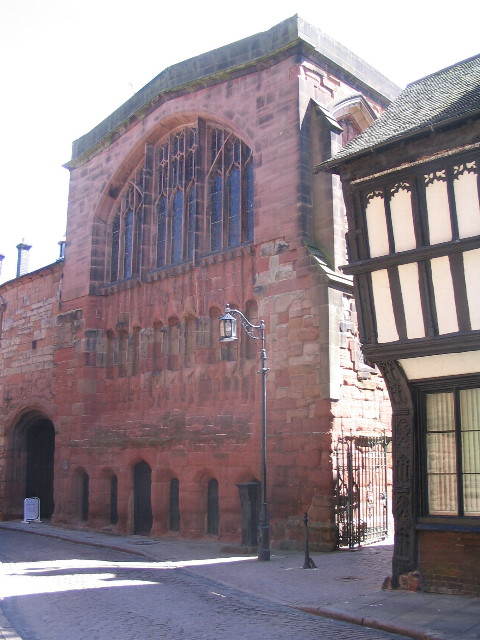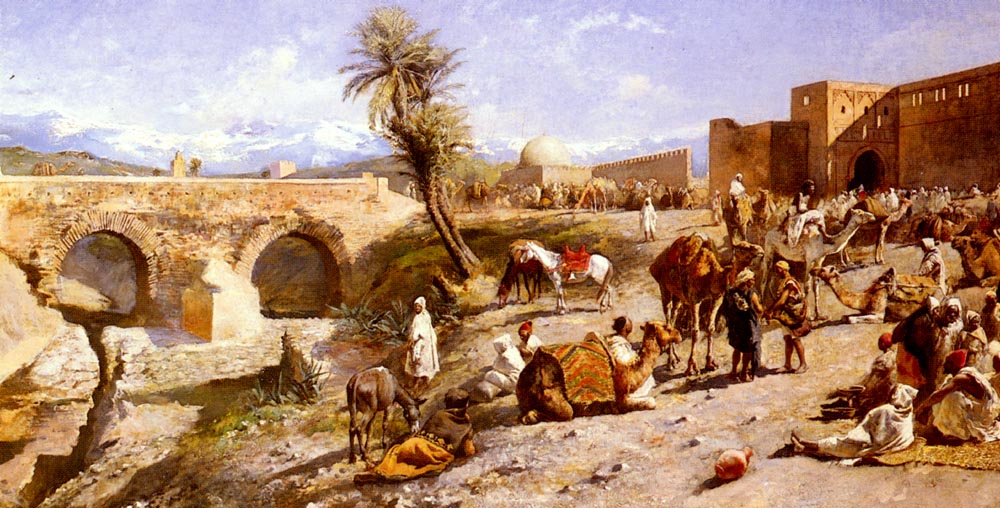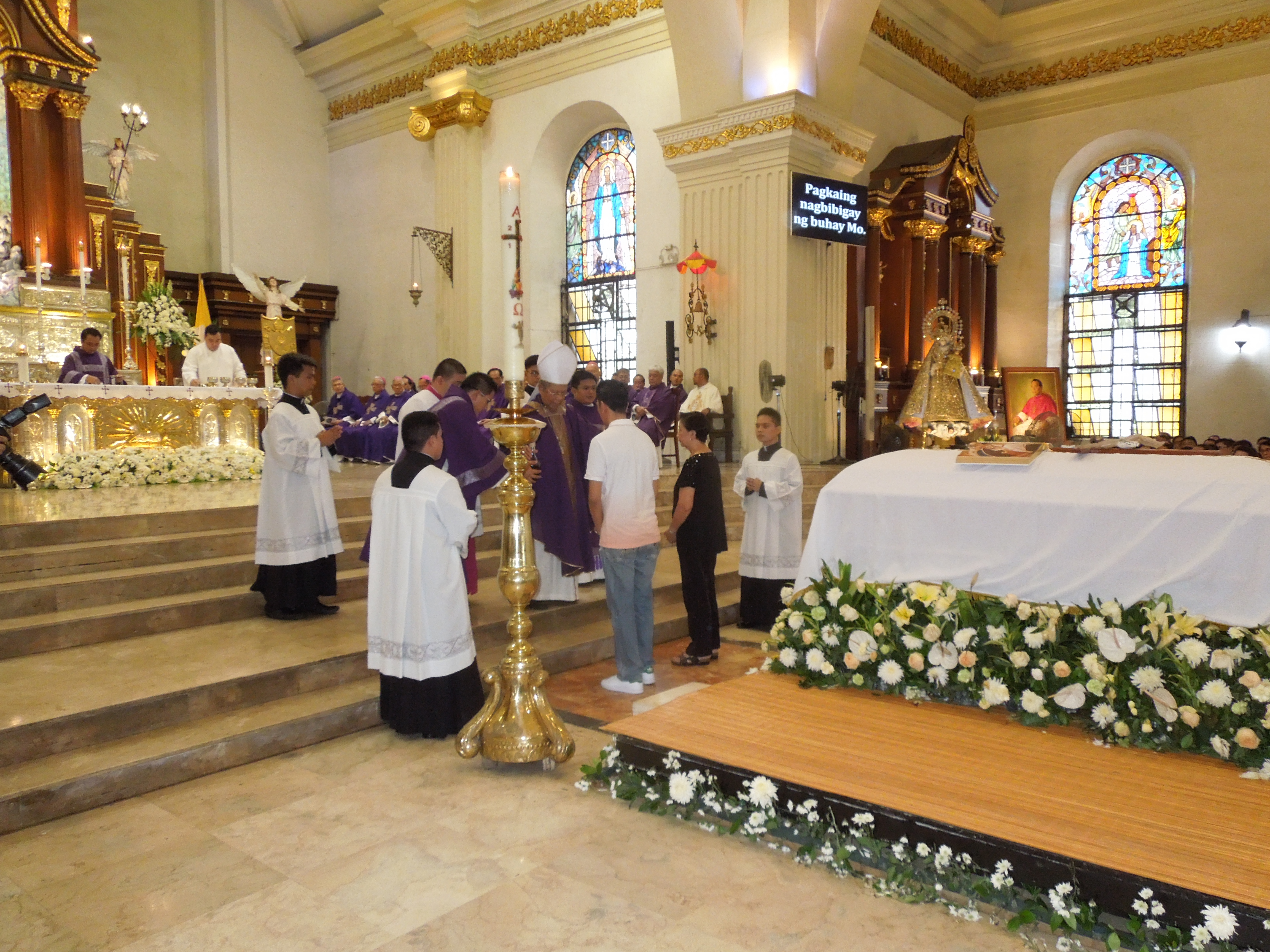|
Obiit
Obiits were an annual endowed service commemorating the dead. Feast days for patron saints were often reserved for endowed masses associated with the ''obiit'', sometimes in a chantry. Background The practice has its origin in the recitation of the names of living and dead Christians (part of the intercessory prayers of the Canon of the Mass). As these lists grew in length separate ceremonies became necessary. Though many ''obiit'' vigils were of the endowed sort, more modest collective ''obiit'' was available for parishioners who could not afford an endowment. Liturgy The liturgy used for ''obiit'' ceremonies with the Office and Mass for the Dead. It began with Vespers and Matins followed by Commendations. At dawn a series of psalms and prayers were read, then before the final Requiem Mass service, there might be a procession to the grave of the deceased. Food and drink Like most medieval social and community gatherings, shared food and drink were a feature of many ''ob ... [...More Info...] [...Related Items...] OR: [Wikipedia] [Google] [Baidu] |
Chantry
A chantry is an ecclesiastical term that may have either of two related meanings: # a chantry service, a Christian liturgy of prayers for the dead, which historically was an obiit, or # a chantry chapel, a building on private land, or an area in a parish church or cathedral reserved for the performance of the "chantry duties". In the Medieval Era through to the Age of Enlightenment it was commonly believed such liturgies might help atone for misdeeds and assist the soul to obtain eternal peace. Etymology The word "chantry" derives from Old French ''chanter'' and from the Latin ''cantare'' (to sing). Its medieval derivative ''cantaria'' means "licence to sing mass". The French term for this commemorative institution is ''chapellenie'' (chaplaincy). Overview Liturgy for the dead Firstly, a chantry could mean the prayers and liturgy in the Christian church for the benefit of the dead, as part of the search for atonement for sins committed during their lives. It might include the ... [...More Info...] [...Related Items...] OR: [Wikipedia] [Google] [Baidu] |
Endowed
A financial endowment is a legal structure for managing, and in many cases indefinitely perpetuating, a pool of Financial instrument, financial, real estate, or other investments for a specific purpose according to Donor intent, the will of its founders and donors. Endowments are often structured so that the inflation-adjusted principal (finance), principal or "corpus" value is kept intact, while a portion of the fund can be (and in some cases must be) spent each year, utilizing a prudent spending policy. Endowments are often governed and managed either as a Nonprofit organization, nonprofit corporation, a Foundation (nonprofit), charitable foundation, or a private foundation that, while serving a good cause, might not qualify as a public charity. In some jurisdictions, it is common for endowed funds to be established as a trust (law), trust independent of the organizations and the causes the endowment is meant to serve. Institutions that commonly manage endowments include academi ... [...More Info...] [...Related Items...] OR: [Wikipedia] [Google] [Baidu] |
Coventry
Coventry ( or ) is a city in the West Midlands, England. It is on the River Sherbourne. Coventry has been a large settlement for centuries, although it was not founded and given its city status until the Middle Ages. The city is governed by Coventry City Council. Formerly part of Warwickshire until 1451, Coventry had a population of 345,328 at the 2021 census, making it the tenth largest city in England and the 12th largest in the United Kingdom. It is the second largest city in the West Midlands region, after Birmingham, from which it is separated by an area of green belt known as the Meriden Gap, and the third largest in the wider Midlands after Birmingham and Leicester. The city is part of a larger conurbation known as the Coventry and Bedworth Urban Area, which in 2021 had a population of 389,603. Coventry is east-south-east of Birmingham, south-west of Leicester, north of Warwick and north-west of London. Coventry is also the most central city in Englan ... [...More Info...] [...Related Items...] OR: [Wikipedia] [Google] [Baidu] |
Comfit
Comfits are confectionery consisting of dried fruits, nuts, seeds or spices coated with sugar candy, often through sugar panning. Almond comfits (also known as "sugared almonds" or " Jordan almonds") in a muslin bag or other decorative container are a traditional gift at baptism and wedding celebrations in many countries of Europe and the Middle East, a custom which has spread to other countries such as Australia and Puerto Rico. While licorice comfits (sometimes sold as torpedoes) are multi-coloured, almond comfits are usually white for weddings, but may be brightly coloured for other occasions. A late medieval recipe for comfits*British Library, Harleian collection, BL MS Harley. 2378. ''Composite Miscellany of Medical, Culinary and Alchemical Texts and Recipes''. late 14th-15th cent.. is based on anise seeds, and suggests also making comfits with fennel, caraway, coriander, and diced ginger Ginger (''Zingiber officinale'') is a flowering plant whose rhizome, gi ... [...More Info...] [...Related Items...] OR: [Wikipedia] [Google] [Baidu] |
Stratford-upon-Avon
Stratford-upon-Avon (), commonly known as just Stratford, is a market town and civil parish in the Stratford-on-Avon district, in the county of Warwickshire, in the West Midlands region of England. It is situated on the River Avon, north-west of London, south-east of Birmingham and south-west of Warwick. The town is the southernmost point of the Arden area on the edge of the Cotswolds. In the 2021 census Stratford had a population of 30,495; an increase from 27,894 in the 2011 census and 22,338 in the 2001 Census. Stratford was originally inhabited by Britons before Anglo-Saxons and remained a village before the lord of the manor, John of Coutances, set out plans to develop it into a town in 1196. In that same year, Stratford was granted a charter from King Richard I to hold a weekly market in the town, giving it its status as a market town. As a result, Stratford experienced an increase in trade and commerce as well as urban expansion. Stratford is a popular ... [...More Info...] [...Related Items...] OR: [Wikipedia] [Google] [Baidu] |
Middle English
Middle English (abbreviated to ME) is a form of the English language that was spoken after the Norman conquest of 1066, until the late 15th century. The English language underwent distinct variations and developments following the Old English period. Scholarly opinion varies, but the '' Oxford English Dictionary'' specifies the period when Middle English was spoken as being from 1150 to 1500. This stage of the development of the English language roughly followed the High to the Late Middle Ages. Middle English saw significant changes to its vocabulary, grammar, pronunciation, and orthography. Writing conventions during the Middle English period varied widely. Examples of writing from this period that have survived show extensive regional variation. The more standardized Old English language became fragmented, localized, and was, for the most part, being improvised. By the end of the period (about 1470) and aided by the invention of the printing press by Johannes Gutenberg in ... [...More Info...] [...Related Items...] OR: [Wikipedia] [Google] [Baidu] |
Fulbrook, Oxfordshire
Fulbrook is a village and civil parish immediately northeast of Burford in West Oxfordshire. The 2011 Census recorded the parish's population as 437. History The Domesday Book of 1086 recorded the village as ''Fulebroc'', possibly meaning "foul brook". Ladyham, a half-timbered house beside the River Windrush, was built in the 16th century and had a five-bay façade added in the Georgian era. Westhall Hill Manor is 16th or 17th century, also with Georgian additions. Parish church The Church of England parish church of Saint James the Great is Norman. The north aisle was added about 1200, linked with the nave by a four-bay arcade in the Transitional style between Norman and Early English Gothic. In the 13th century the chancel was remodelled and the north transept were added, both in Early English Gothic. The south porch was added later in the same century. The east window of the chancel, the west window of the north aisle and one window in the south wall or the aisle are ... [...More Info...] [...Related Items...] OR: [Wikipedia] [Google] [Baidu] |
Guilds
A guild ( ) is an association of artisans and merchants who oversee the practice of their craft/trade in a particular area. The earliest types of guild formed as organizations of tradesmen belonging to a professional association. They sometimes depended on grants of letters patent from a monarch or other ruler to enforce the flow of trade to their self-employed members, and to retain ownership of tools and the supply of materials, but were mostly regulated by the city government. A lasting legacy of traditional guilds are the guildhalls constructed and used as guild meeting-places. Guild members found guilty of cheating the public would be fined or banned from the guild. Typically the key "privilege" was that only guild members were allowed to sell their goods or practice their skill within the city. There might be controls on minimum or maximum prices, hours of trading, numbers of apprentices, and many other things. These rules reduced free competition, but sometimes maintained ... [...More Info...] [...Related Items...] OR: [Wikipedia] [Google] [Baidu] |
Procession
A procession is an organized body of people walking in a formal or ceremonial manner. History Processions have in all peoples and at all times been a natural form of public celebration, as forming an orderly and impressive ceremony. Religious and triumphal processions are abundantly illustrated by ancient monuments, e.g. the religious processions of Egypt, those illustrated by the rock-carvings of Boghaz-Keui, the many representations of processions in Greek art, culminating in the great Panathenaic procession of the Parthenon Frieze, and Roman triumphal reliefs, such as those of the arch of Titus. Greco-Roman practice Processions played a prominent part in the great festivals of Greece, where they were always religious in character. The games were either opened or accompanied by more or less elaborate processions and sacrifices, while processions from the earliest times formed part of the worship of the old nature gods, as those connected with the cult of Dionysus and the ... [...More Info...] [...Related Items...] OR: [Wikipedia] [Google] [Baidu] |
Psalms
The Book of Psalms ( or ; he, תְּהִלִּים, , lit. "praises"), also known as the Psalms, or the Psalter, is the first book of the ("Writings"), the third section of the Tanakh, and a book of the Old Testament. The title is derived from the Greek translation, (), meaning "instrumental music" and, by extension, "the words accompanying the music". The book is an anthology of individual Hebrew religious hymns, with 150 in the Jewish and Western Christian tradition and more in the Eastern Christian churches. Many are linked to the name of David, but modern mainstream scholarship rejects his authorship, instead attributing the composition of the psalms to various authors writing between the 9th and 5th centuries BC. In the Quran, the Arabic word ‘Zabur’ is used for the Psalms of David in the Hebrew Bible. Structure Benedictions The Book of Psalms is divided into five sections, each closing with a doxology (i.e., a benediction). These divisions were probably introdu ... [...More Info...] [...Related Items...] OR: [Wikipedia] [Google] [Baidu] |
Requiem Mass
A Requiem or Requiem Mass, also known as Mass for the dead ( la, Missa pro defunctis) or Mass of the dead ( la, Missa defunctorum), is a Mass of the Catholic Church offered for the repose of the soul or souls of one or more deceased persons, using a particular form of the Roman Missal. It is usually celebrated in the context of a funeral (where in some countries it is often called a Funeral Mass). Musical settings of the propers of the Requiem Mass are also called Requiems, and the term has subsequently been applied to other musical compositions associated with death, dying, and mourning, even when they lack religious or liturgical relevance. The term is also used for similar ceremonies outside the Roman Catholic Church, especially in Western Rite Orthodox Christianity, the Anglo-Catholic tradition of Anglicanism, and in certain Lutheran churches. A comparable service, with a wholly different ritual form and texts, exists in the Eastern Orthodox and Eastern Catholic chu ... [...More Info...] [...Related Items...] OR: [Wikipedia] [Google] [Baidu] |
Commendations
An award, sometimes called a distinction, is something given to a recipient as a token of recognition of excellence in a certain field. When the token is a medal, ribbon or other item designed for wearing, it is known as a decoration. An award may be described by three aspects: 1) who is given 2) what 3) by whom, all varying according to purpose. The recipient is often to a single person, such as a student or athlete, or a representative of a group of people, be it an organisation, a sports team or a whole country. The award item may be a decoration, that is an insignia suitable for wearing, such as a medal, badge, or rosette (award). It can also be a token object such as certificate, diploma, championship belt, trophy, or plaque. The award may also be or be accompanied by a title of honor, as well as an object of direct value such as prize money or a scholarship. Furthermore, an honorable mention is an award given, typically in education, that does not confer the recipie ... [...More Info...] [...Related Items...] OR: [Wikipedia] [Google] [Baidu] |









